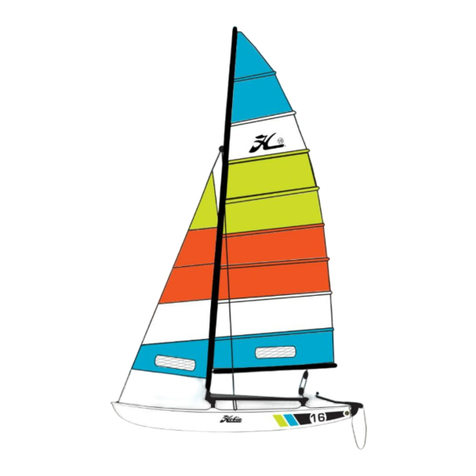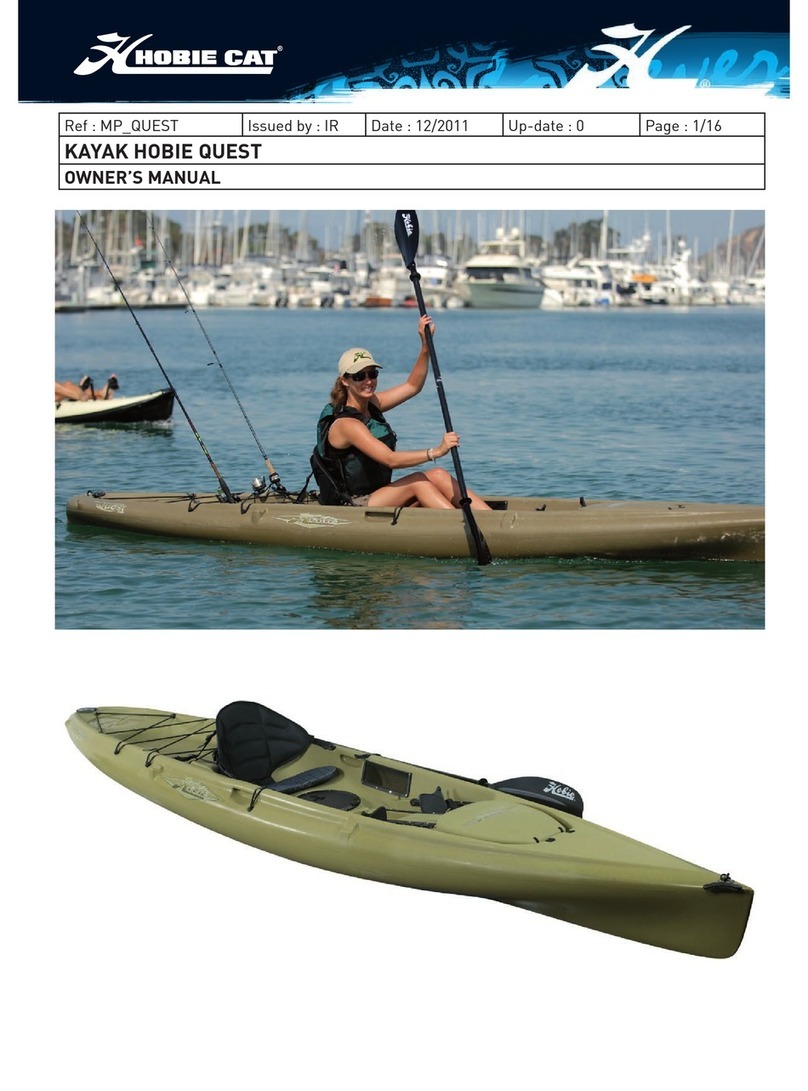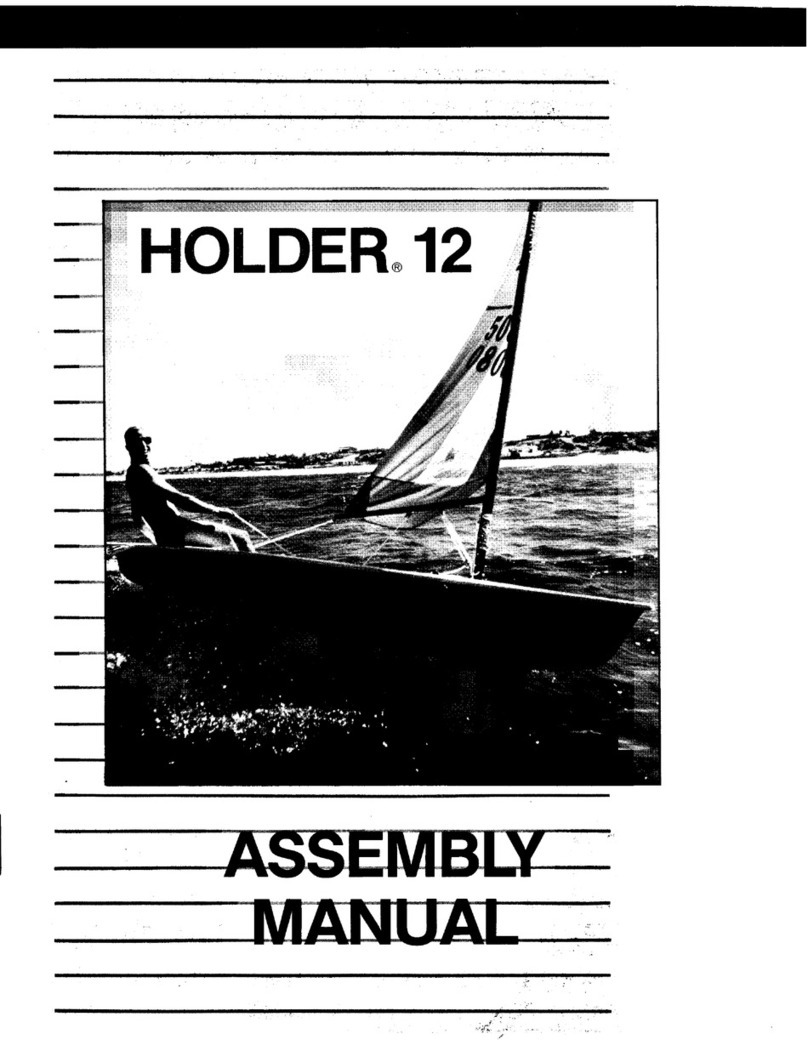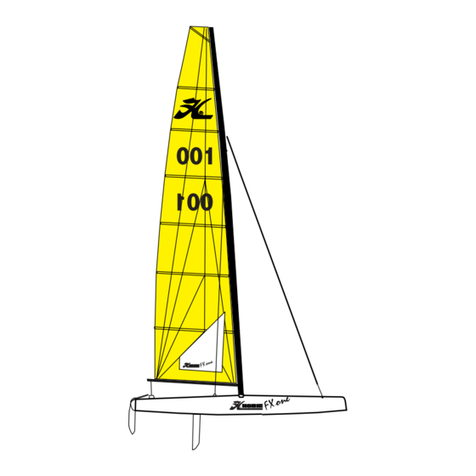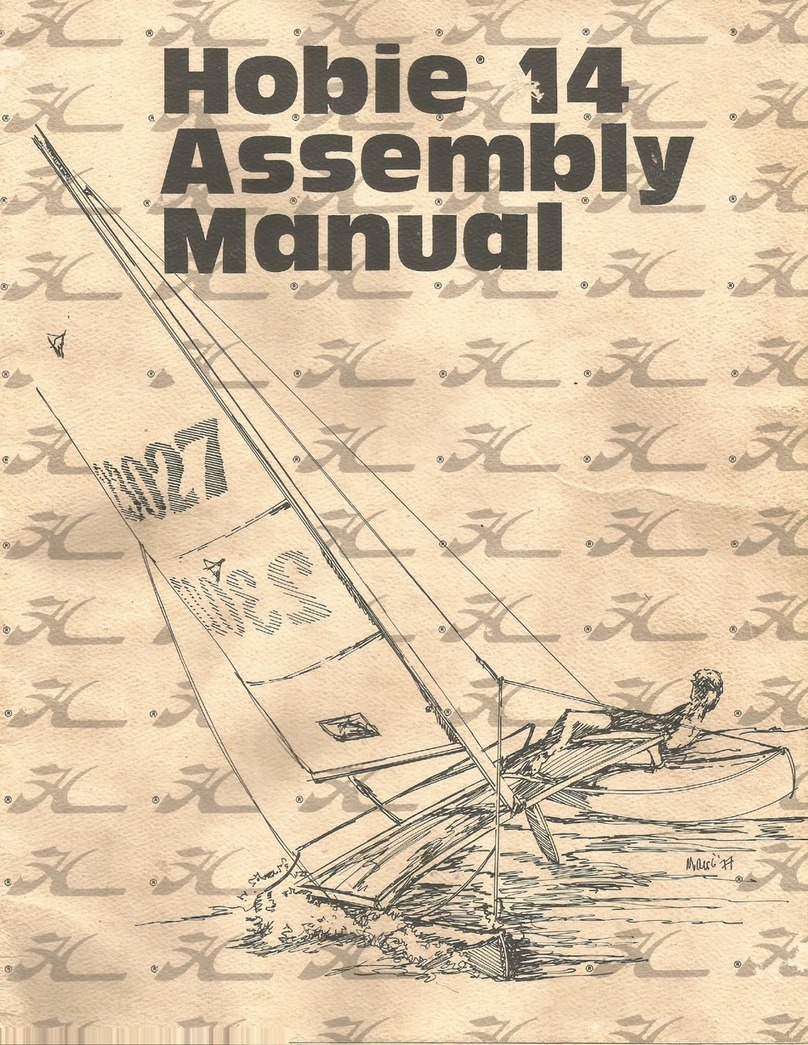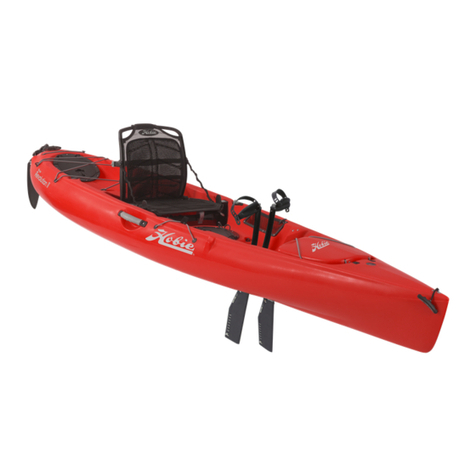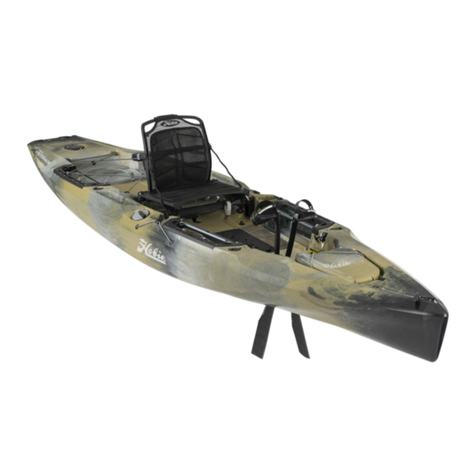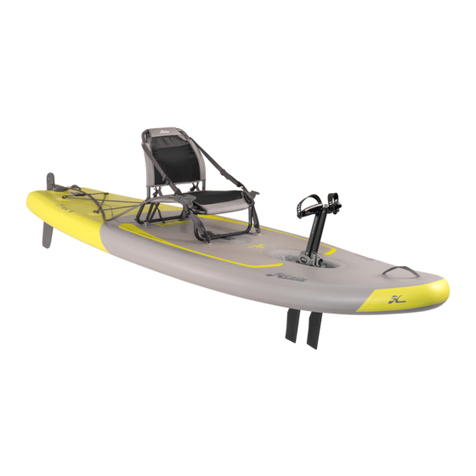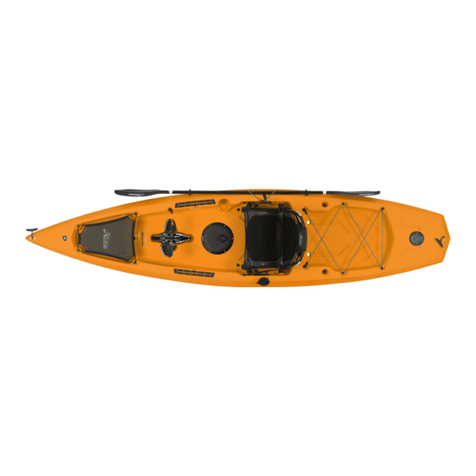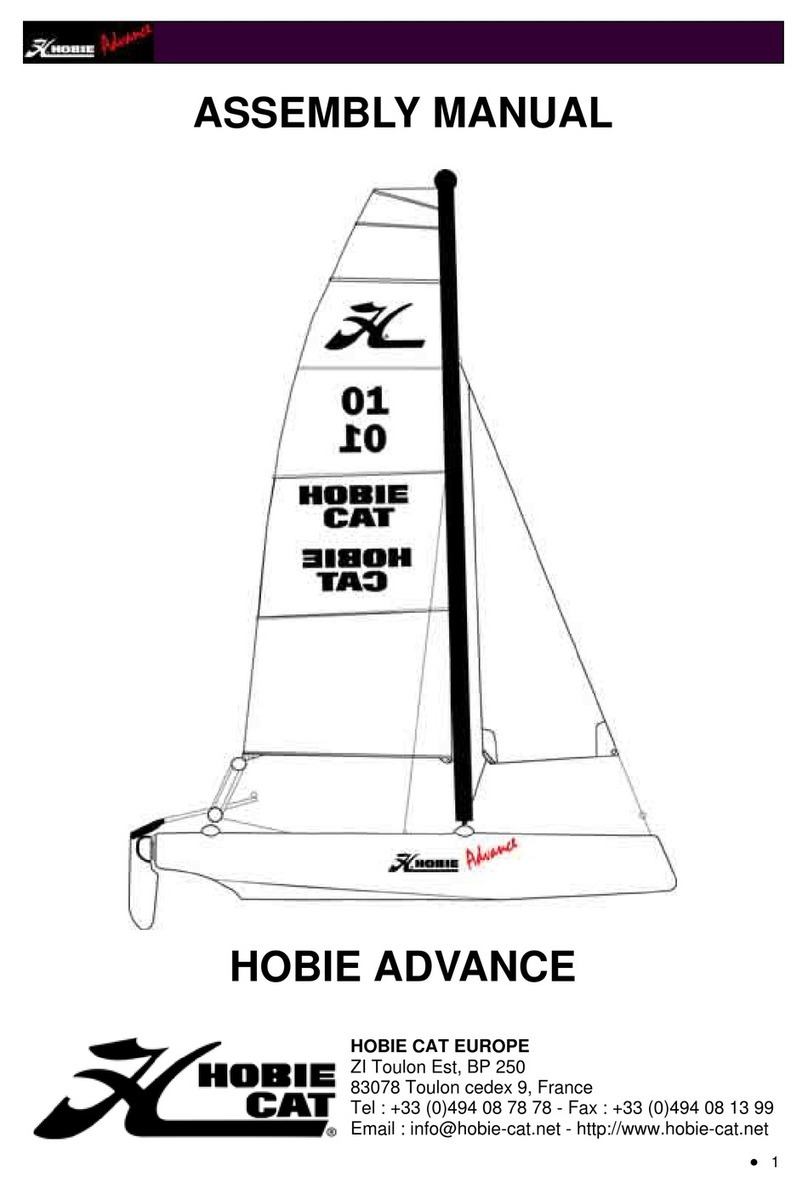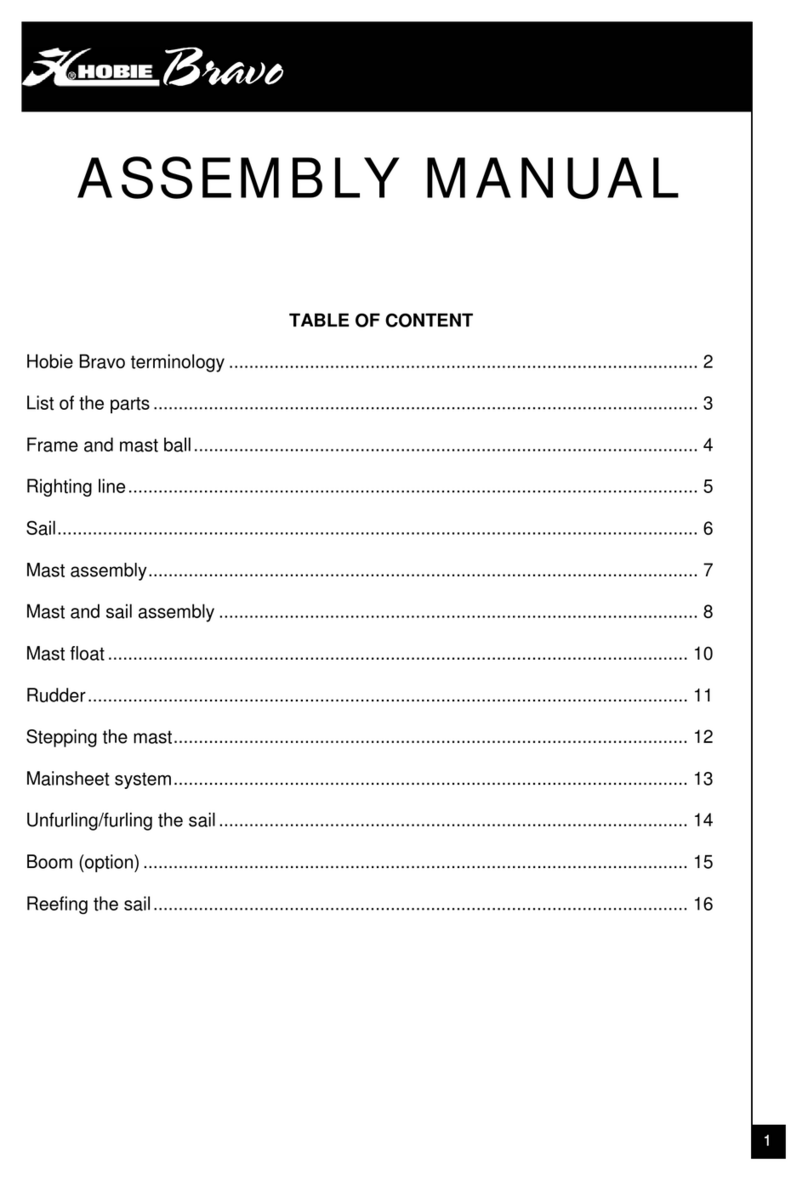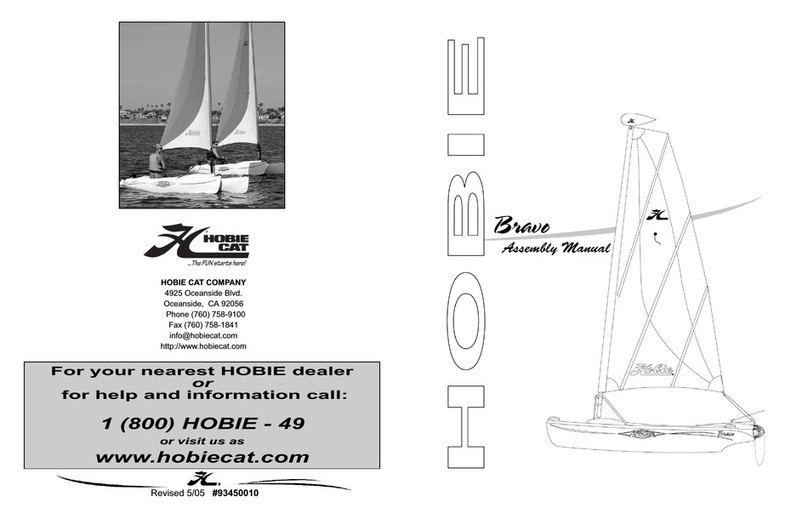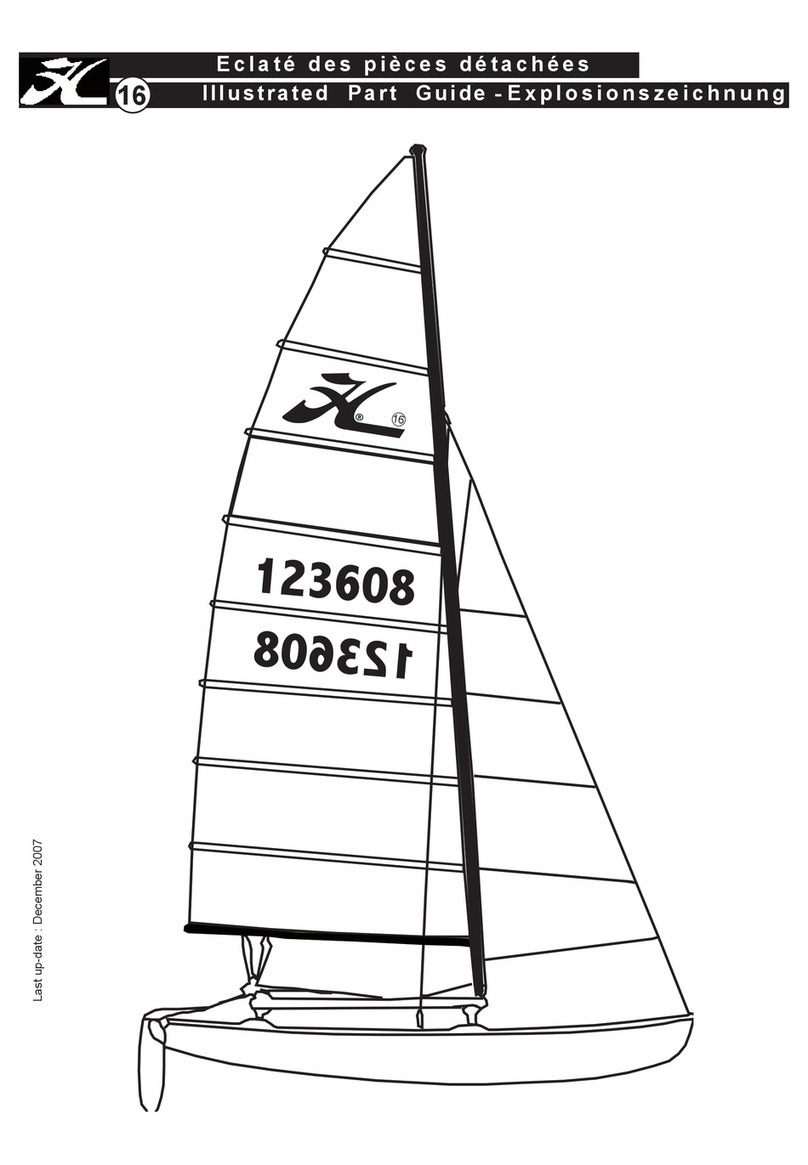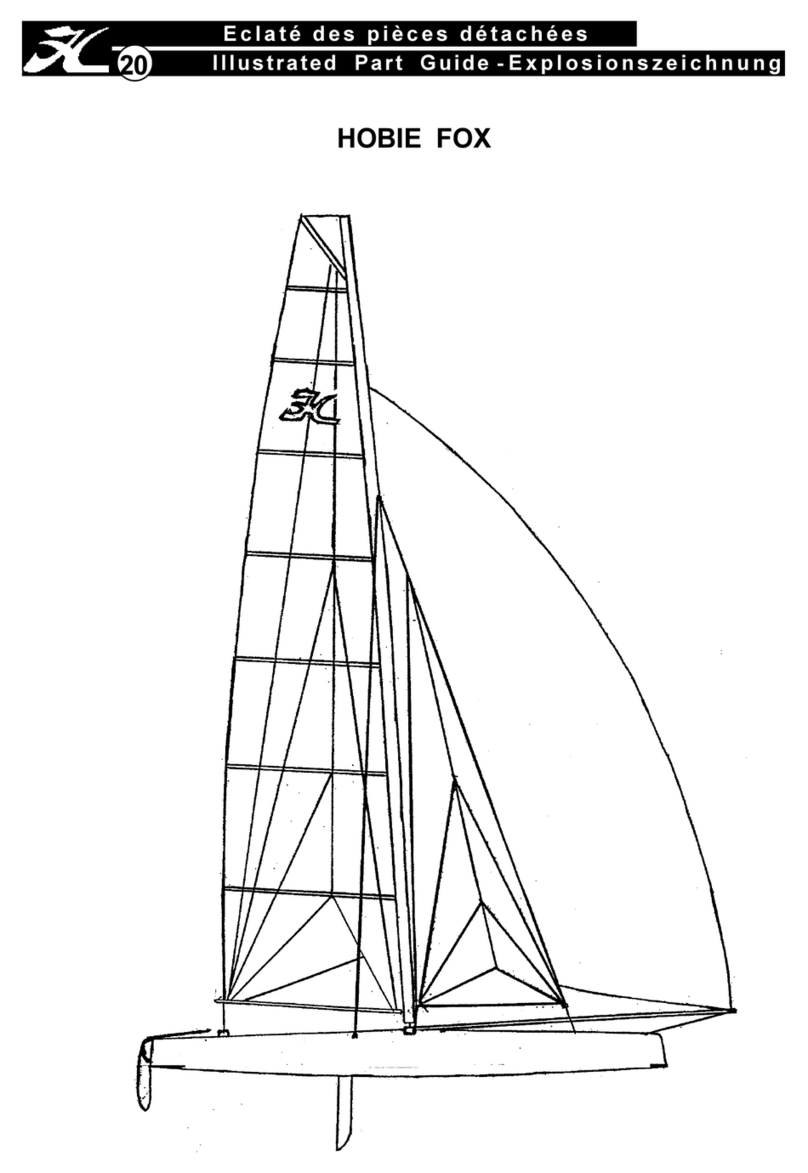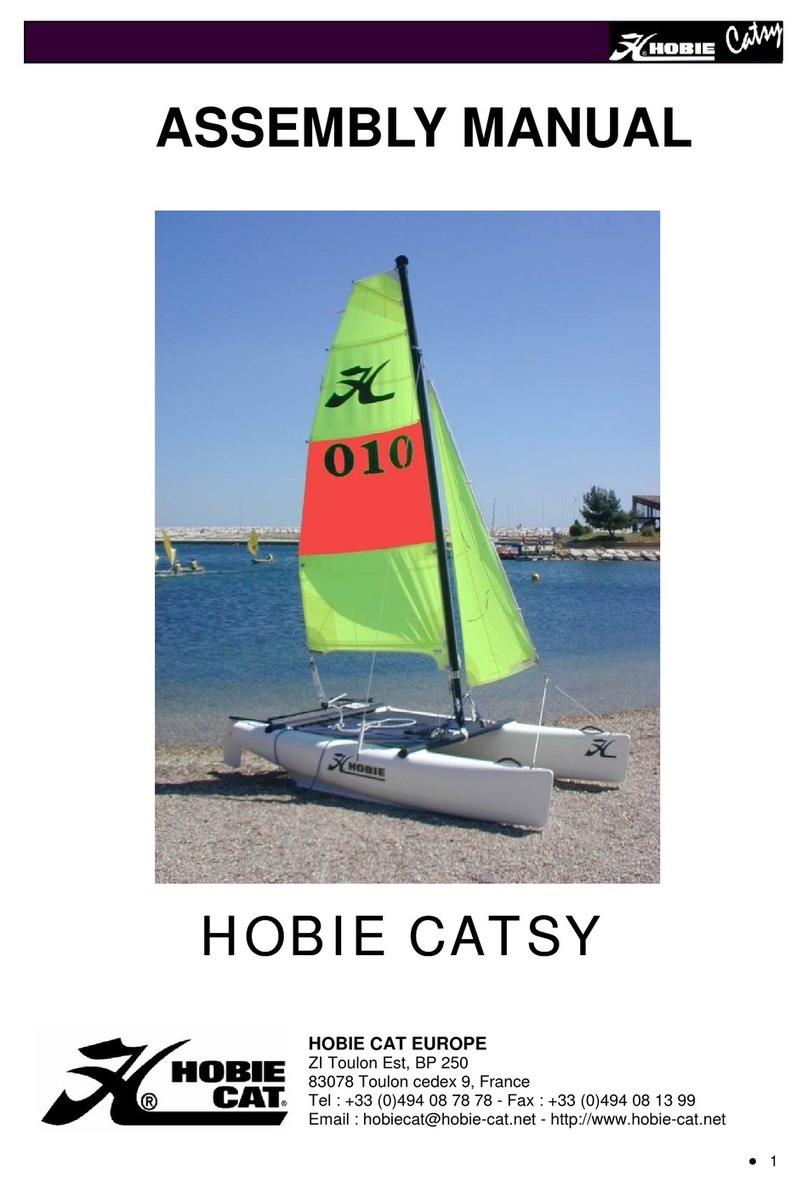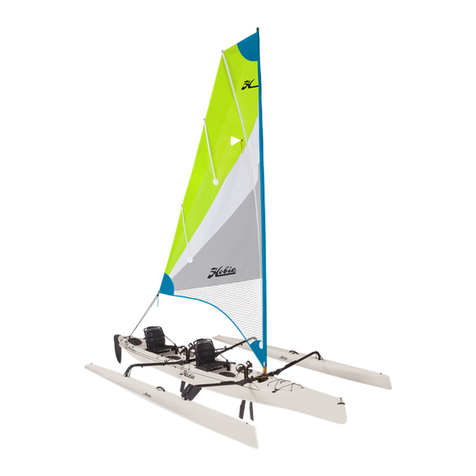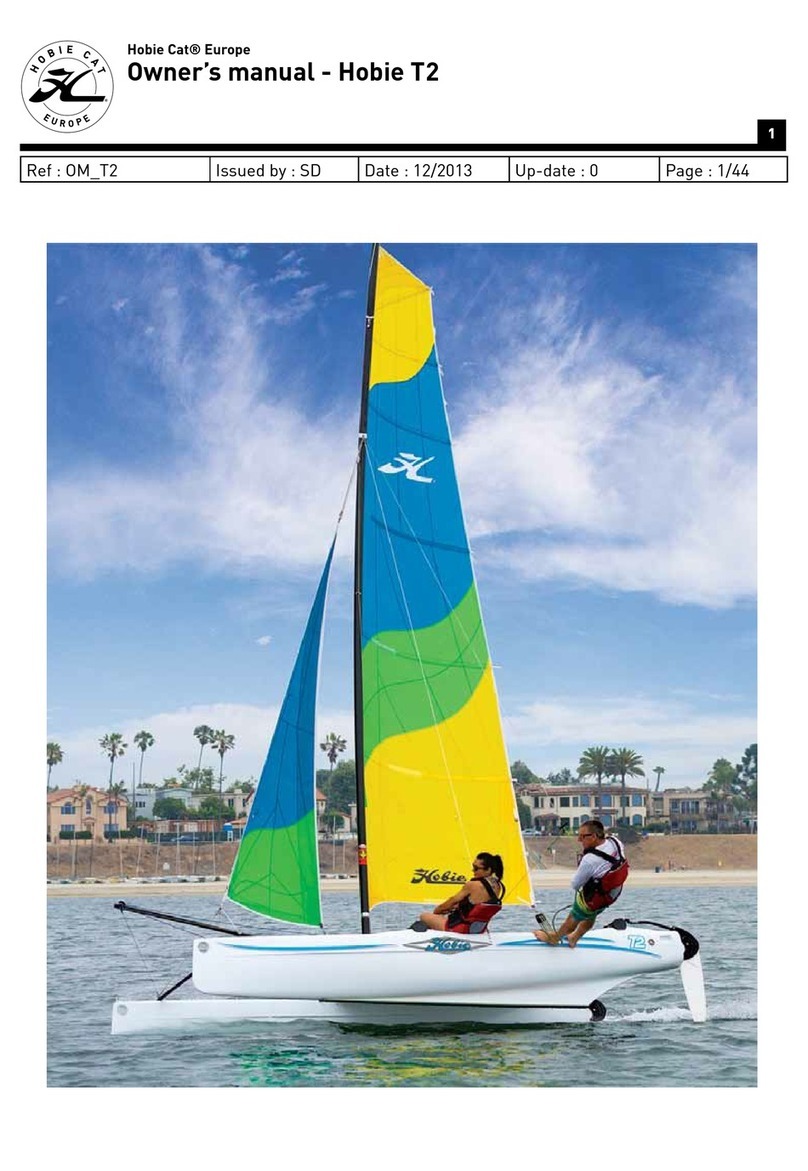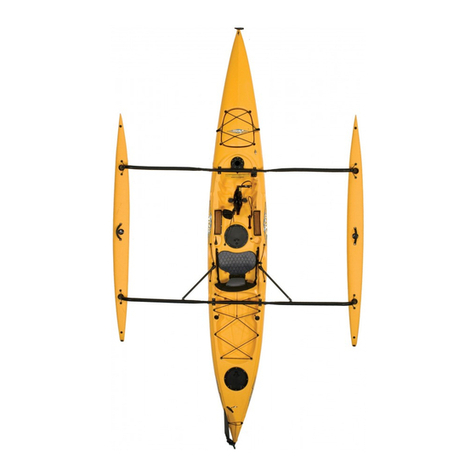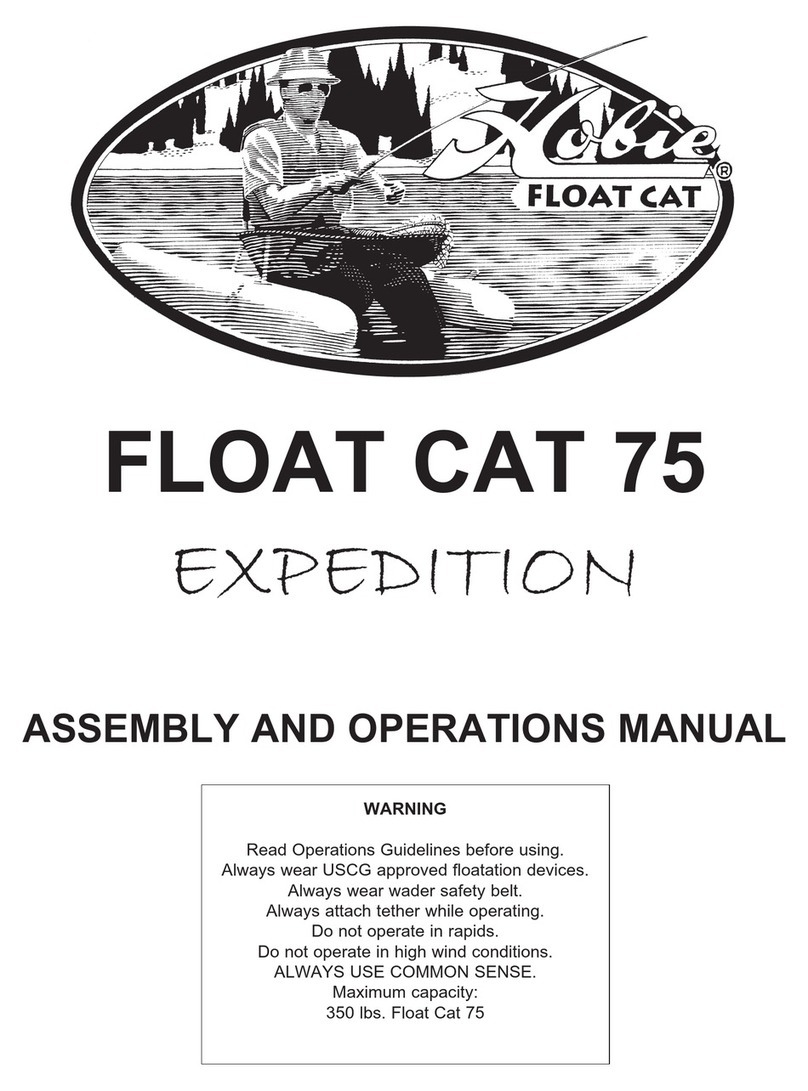II. Frame and Mesh TrampolineNote
Note Placing the bows in a slightly toed-in position
will make sliding the trampoline easier.
The one-piecemeshtrampoline installs with
the lacing grommetson the sideclosestto the 8. Slidethe front crossbeamonto the trampo-
rear crossbar.The sidewith grommetsnearest line bolt ropesuspendedbetweenthe hulls.
the crossbar,is the rear portion of the trampo- 9. Slide eachfront eyestrapon either side of
line. the front crossbarsooneis at eachend.
All directions referring to "right," "left," 10. Spreadthe bows apart slightly and insert
"front" and "back" are basedon looking from one side of the crossbar over its receiver.
the stems toward the bows. Then slip on the other side.Usethe rubber
mallet to snugeachsideonto its receiver.
1. First, with the trampoline track facing 11. Attach the crossbar bolts as described in
forward, slip the rear crossbar(part no. 1) steps10and 11of sectionI.
ontothe right hull (part no.2).The factory-
installed support castings slide into the
crossbar.Besure the crossbarfits entirely Note
over the support casting. It may be neces-
sary to tap the crossbaronto the hull with Oncethe boat hasbeensaileda few times it
the rubber mallet. SeeFigure 1. takes on "normal set." In other words, the
2. Slide oneof the four eyestraps(part no.3) crossbarand hulls will setandneedretighten-
on the crossbarby slipping the squarenut ing. This setting also occurs after trailering
inside the track. The eyestrap should be any long distance. This tightening procedure
positionedas closeto the hull as possible shouldbeperformedperiodically.
without touching it.
3. Slidethe meshtrampoline(part no.4),with 12. Securethetrampolinecomersasin step13,
the grommetsaft, into and acrossthe rear sectionI.
crossbar(part no. 1).
4. Slide the secondeyestrap(part no. 3) into This completes assembly of mesh trampo-
position so there is one at eachcomer of lines.
the trampoline. Tighten the eyestraps.
5. Slip the left sideof the rear crossbaronto
the left hull. You may need to use the
rubber mallet to tap the assemblysnug.
CAUTION
Beforecompleting step 5, check the threads
of the crossbar bolts by hand screwing them
into eachanchor bar by hand. If the bolt will
not thread easily,usea tap and dieto clearthe
threads. Use an anti-seizing lubricant such as
Never-Seez@to helppreventcrossthreadingand
galling.
6. Drop in eachof the rear crossbarbolts into
eachsideof the crossbar.DO NOT attach
the anchorbars(part nos.7 and8).
7. Slide both sidesof the trampoline up both
siderailgroovessimultaneously.
-8-
